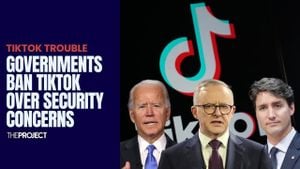New Delhi is once again grappling with severe air pollution, prompting the city's government to take decisive measures for the health and safety of its youngest residents. With air quality levels becoming alarmingly hazardous, primary schools have shifted to online learning as of November 15, 2024.
The recent spike in pollution levels has seen New Delhi being ranked as the most polluted city globally, surpassing the notoriously polluted Lahore, Pakistan. This shift was confirmed by the Swiss air quality monitoring platform IQ Air, which reported the air quality index (AQI) soaring to 802. According to guidelines established by the Indian government, AQI levels above 400 are classified as “severe.”
Chief Minister Atishi Marlena Singh took to the social media platform X to announce the transition to online classes for all primary school students and stated, “Due to rising pollution levels, all primary schools in Delhi will be shifting to online classes, until future directions.” This decision, aimed at protecting children from hazardous air quality, is particularly important as the concentration of PM2.5 particles reached 477 micrograms per cubic meter, which is over 95 times the safe limit set by the World Health Organization.
The decision to move classes online came amid dense fog and worsening air quality across the capital, making outdoor exposure dangerous for young children. Authorities have also enacted Stage 3 of their Graded Response Action Plan (GRAP), halting construction activities and restricting certain vehicles on the road to combat the rising smog. This yearly phenomenon of poor air quality often arises from several factors, including vehicular emissions, crop burning, and unfavorable weather conditions.
Many parents welcomed the swift action taken by the government but expressed concern about the delay prior to the announcement. Health experts had previously urged authorities to minimize students' exposure to the hazardous air. Aprajita Gautam, president of the Delhi Parents’ Association, noted, “The government should come up with a solid plan to tackle pollution since this has become an annual problem during the winter months.” Parents reported increasing health issues among children, including respiratory ailments, dry skin conditions, and other illnesses attributed to the pollution.
Beyond the transitional measures, many schools had already been preparing to protect students even before the government mandate was announced. Institutions like Sanskriti School have installed air purifiers and distributed N95 masks to students as precautionary steps. Principal Richa Sharma Agnihotri highlighted the importance of maintaining indoor air quality, stating, “We have installed air purifiers and regularly change filters. Students are encouraged to wear N95 masks.” School officials across the city emphasized the need for stringent permanent measures to address what appears to be an annual battle with pollution.
While online classes are now mandated for students up to Class 5, older students still engage in limited outdoor activities, albeit under strict safety regulations. Schools are encouraging parents to monitor the air quality and to keep windows closed during hours of high pollution.
This year’s pollution spike is reflective of broader urban issues and the annual struggle as New Delhi grapples with air quality deterioration every winter. Many communities have come together, and advocacy groups like the “Warrior Moms” network have been vocal about health issues caused by toxic air exposure, providing recommendations and filing memorandums with health officials.
Going forward, local government officials have assured parents and students alike they will continue to monitor air quality levels and adapt their responses accordingly, with the situation set to be reviewed after the November 15 holiday weekend.
The shift to online learning is partly seen as temporary relief, with government officials stressing the need for actionable solutions to the environmental challenges New Delhi faces. Whether the move is enough to address the persistent health risks remains to be seen, but one thing is clear: for many families, the battle against the city’s toxic air is far from over.
With schools taking these measures, there is hope for the future—one where children can learn without fear of adverse health effects caused by air quality. Only time will tell if this online shift will spur more comprehensive action against air pollution, or if it will serve as just another Band-Aid solution to the larger problem.



